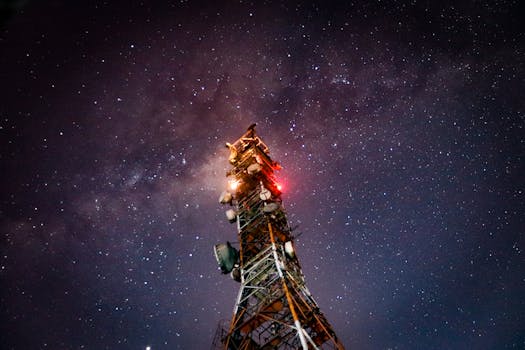
MEO Satellites: Revolutionizing Global Communication with Medium Earth Orbit Technology
MEO satellites, or Medium Earth Orbit satellites, are a type of satellite that operates in an orbital altitude of approximately 2,000 to 36,000 kilometers above the Earth’s surface. This range is significantly lower than the Geostationary Orbit (GEO) satellites, which are located at an altitude of around 36,000 kilometers. The MEO satellites are designed to provide faster and more reliable communication services, making them an attractive option for various industries, including telecommunications, navigation, and weather forecasting.
The MEO satellites have several advantages over the traditional GEO satellites. One of the primary benefits is the reduced latency, which is the time it takes for a signal to travel from the Earth to the satellite and back. The lower altitude of the MEO satellites results in a shorter signal travel time, making them ideal for real-time applications such as video conferencing, online gaming, and live streaming. Additionally, the MEO satellites have a broader coverage area, allowing them to provide services to a larger number of users simultaneously.
How MEO Satellites Work
MEO satellites work by using a network of satellites in medium earth orbit to provide continuous coverage of the Earth’s surface. The satellites are equipped with transponders, which receive and retransmit signals to and from the Earth. The signals are transmitted to the satellites using large antennas, and the satellites then retransmit the signals back to the Earth, where they are received by smaller antennas. The MEO satellites use a variety of frequencies, including Ka-band, Ku-band, and C-band, to provide a range of services, including broadband internet, television broadcasting, and mobile communications.
The MEO satellites are typically launched into orbit using a rocket, and once in orbit, they use their onboard propulsion system to maintain their position and altitude. The satellites are designed to operate for a period of 10 to 15 years, after which they are replaced by new satellites. The MEO satellites are also equipped with backup systems, such as redundant transponders and power supplies, to ensure continuous operation in the event of a failure.
Applications of MEO Satellites
MEO satellites have a wide range of applications, including telecommunications, navigation, and weather forecasting. In the telecommunications sector, MEO satellites are used to provide broadband internet services, including internet access, voice over internet protocol (VoIP), and video conferencing. The MEO satellites are also used to provide mobile communications services, including voice and data services, to remote and underserved areas.
In the navigation sector, MEO satellites are used to provide location-based services, including GPS, GLONASS, and Galileo. The MEO satellites are also used to provide weather forecasting services, including storm tracking and weather monitoring. The MEO satellites are equipped with specialized instruments, such as radar and spectrometers, to collect data on the Earth’s atmosphere and weather patterns.
Future of MEO Satellites
The future of MEO satellites looks promising, with several new constellations and services being launched in the coming years. One of the most significant developments is the launch of the O3b constellation, which will provide high-speed internet services to remote and underserved areas. The O3b constellation will consist of 20 MEO satellites, each equipped with 10 gigabits per second of capacity.
Another significant development is the launch of the OneWeb constellation, which will provide global internet coverage using a network of 650 MEO satellites. The OneWeb constellation will offer speeds of up to 1 gigabit per second, making it ideal for applications such as online gaming and live streaming. The OneWeb constellation is expected to be fully operational by 2025, and it will provide internet services to a wide range of industries, including aviation, maritime, and rural communications.
In conclusion, MEO satellites are revolutionizing the way we communicate globally, offering faster and more reliable connections than traditional GEO satellites. The MEO satellites have a wide range of applications, including telecommunications, navigation, and weather forecasting. With several new constellations and services being launched in the coming years, the future of MEO satellites looks promising, and they are expected to play a significant role in shaping the future of global communication.
